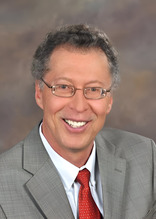Tribes cast eye to water laws and protecting resource
Peter Harriman, pharrima@argusleader.com 11:09 p.m. CDT July 25, 2014
At the Indian Water Rights Conference this week in Rapid City, lawyer David Ganje gave a overview of water laws as they relate to tribes and offered recommendations on writing and maintaining successful tribal water codes. The conference, hosted by the Great Plains Water Alliance, included tribes from South Dakota, North Dakota, Minnesota, Montana and Alaska.
Ganje, who specializes in natural resources law, recently answered five questions on the subject for the Argus Leader.
1. Federal law already assigns primary water rights to tribes for the exterior boundaries of reservations. Why do tribes need water codes?
“Water codes are really property management vehicles for managing both a right and a commodity. Tribes, as all government bodies now, are more and more aware of the proper management of water. Historically, all of them had been inattentive to water. There had more or less been enough of it around, both surface and groundwater. Now there is a realization that surface and groundwater interact with each other, and climate is affecting all of them. This goes for states and reservations.”
2. What is the relationship between state government and tribes in the Dakotas regarding water?
“Different states over time have approached reservations and undertaken water compacts. There are about 14 different water compacts in the region. In Idaho, Utah and Colorado, some tribes have completed successful water compacts, effective agreements between reservations and the state. There are no compacts in South Dakota and North Dakota. It is always possible. It is a matter of how willing each side is to negotiate, put everything on the table and address it.”
3. As they deal with the issue of managing water, are states and tribes also further developing the concept of tribal sovereignty?
“Water is a major issue in terms of what is tribal sovereignty. While there is precedent for strong water rights in favor of tribes, the question is how does that coexist with an immediate neighbor’s rights, and how does it exist on checker-boarded reservations? Those are questions where water is developing the idea of sovereignty.”
4. Is the historical assumption in the Dakotas that there will always be enough water undergoing review?
“Yes, the scientists are telling us the ebb and flow of water is still unpredictable, notwithstanding the management of flood control dams. They are not the panacea not the bottom line. Nor are they a guarantee that there can be a proper allocation of those resources. The question of who owns the water, who owns the flow is not yet resolved. Science has taught us to be careful, to be more prudent about this.”
5. Because it is out of sight, is groundwater also out of mind with regard to water quality, even in the face of potential development in South Dakota such as uranium mining, fracking to increase oil and gas production and the Keystone XL pipeline that could possibly threaten it?
“Groundwater quality is an emerging issue. The uranium leach mining currently under consideration has risks involved. There is a school of scientific thought that the dispersal of water is as problematic as the water itself used in natural gas production. There is some evidence that water has a tendency to leach itself into groundwater.”





